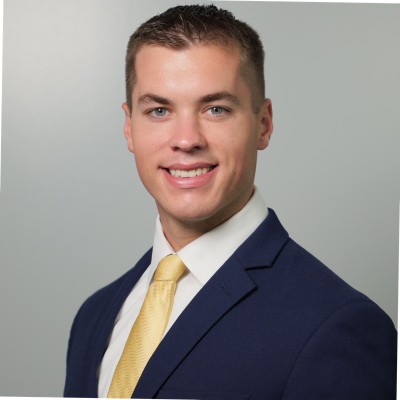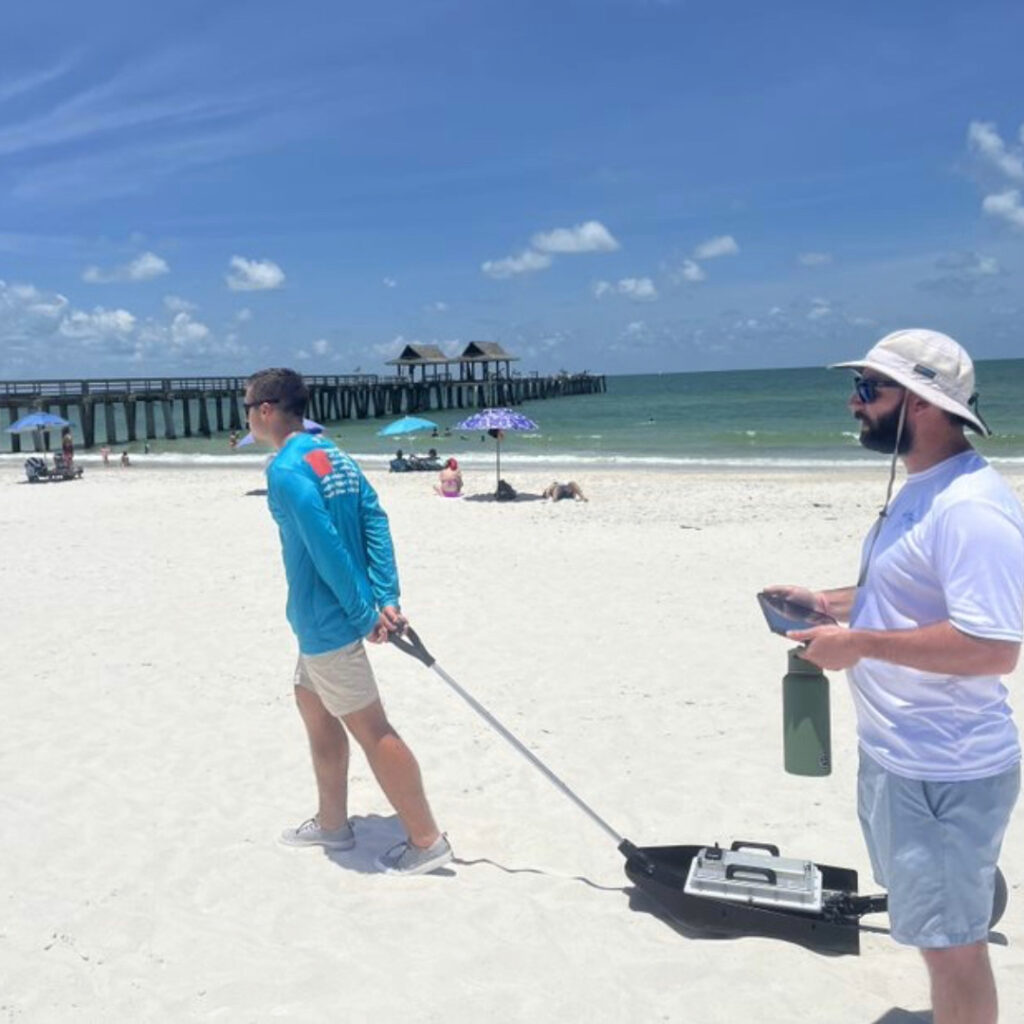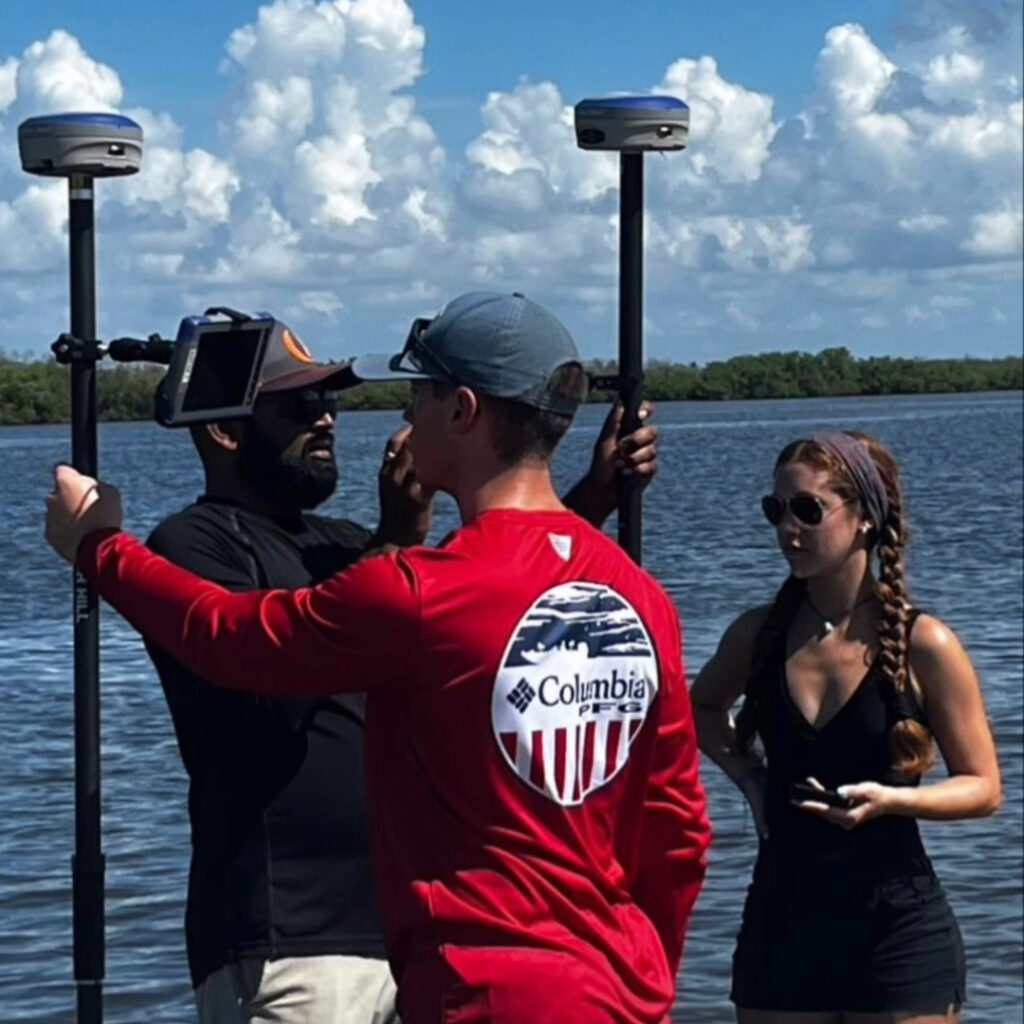 Student Spotlight is a recurring segment of Florida Sea Grant’s Sea Scholars Newsletter, where a previous or current student answers questions about their research experience.
Student Spotlight is a recurring segment of Florida Sea Grant’s Sea Scholars Newsletter, where a previous or current student answers questions about their research experience.
Nathan Hewitt was a 2023 project development intern under Michael Savarese, PhD, Department of Marine and Earth Sciences at Florida Gulf Coast University (FGCU). This past spring, Nathan concluded his internship and graduated with a bachelor’s in environmental science and marine science. Currently, he interns for NASA’s Pop-Up Project at FGCU and works as a student lab assistant at the university’s Water School.
Q: What sparked your interest in marine science and applying to be an intern with the Florida Sea Grant?
As funny as it is, Shark Week and a bunch of shows on Animal Planet and National Geographic sparked my early interest, as well as just going to the zoo a lot. As a kid, I found a passion for fishing, which later inspired me to protect our waters. Once I learned about overfishing, I wanted to help populations stay stable, help balance the marine environment, and conserve the fisheries for the future.
Then I got involved with Florida Sea Grant after Hurricane Ian came through and hit right outside FGCU. I was even in the hurricane. After taking Dr. Savarse’s ArcGIS class, he presented a research opportunity to look at the impacts of Hurricane Ian and utilize both geomorphology and ArcGIS. I was more than happy to start working on the project.

Nathan collecting data on elevation and coordinates with a piece of equipment known as the Carlson BRx7.
Q: Can you describe a little bit about what your research was about?
We were flying drones outfitted with a wide sensor to get elevation data from the beaches of Southwest Florida, looking specifically at how the geomorphology shifted.
We were looking at shoreline changes, areas of erosion and deposition, and most notably, the presence of scour channels. Scour channels occur when the outgoing storm surge erodes sediments. As storm waters recede, these channels can form. We were looking at these channels’ frequency in different areas of beaches, as well as what caused these features to come about, whether they were near a vegetated walking path or a ramp or just completely random.
Q: What would you say are the practical implications or impacts of this research?
With climate change as a whole, it will be important to know these implications for future management decisions. As researchers, we can’t advise policy changes, but we can supply the information to help guide people, like considering whether certain types of vegetated paths could lead to erosion. In Fort Myers Beach, we saw some of the houses being eroded away as channels formed in the paths of least resistance, where there are areas of sediment with not much of an anchor, like mangroves or vegetation. Sometimes small houses with less hard foundations are more vulnerable to erosion and scour channel formation.
The information and data collected can help people consider such questions:
How do you best build these buildings in the future for more intense storms, which are projected with climate change, rising sea levels, and even potentially bigger stalls? How do you go into the future with this knowledge and lessons at hand to better adapt?
 Q: Did you find anything interesting or surprising throughout this research?
Q: Did you find anything interesting or surprising throughout this research?
One of these surprising things was the frequency of these storm surges in certain areas, but not in other areas. Sanibel and Fort Myers Beach were two barrier islands that had a high frequency of scour channels. Sanibel especially, had a lot of these channels on walking paths with no vegetation and beach access for people.
These barrier islands ended up serving as a scour channel, crossing into the dune fields and almost destroying these dunes worse than the damage people do in the first place, just walking to and from.
We also saw a higher abundance and deeper channels on the centralized location of Fort Myers Beach. We did research from Cayo Costa and Upper Captiva all the way down through Marco Island up through Lee and Collier counties. These are some of the only places that had more ebb surge channels, at least at a higher frequency than we saw anywhere else.
Q: Did you have a favorite part about being a research intern or a favorite experience?
It was absolutely the field. Going outside to beaches is never a bad thing. But also, it feels good to do meaningful research, that people are looking at us to advise on future decisions.
I enjoyed having conversations with people, including locals and people at national conferences, who are appreciative of the work that we’ve been doing and thankful that we have a few ideas on how to better adapt to the future.
Q: If you had to sum up your time as an intern in three words, what would they be?
Complicated, meaningful, and unforgettable.
Q: How would you say your work with the Florida Sea Grant has impacted your current research at FGCU’s Water School?
It’s given me greater confidence overall with my research abilities, but just provided the whole opportunity. Florida Sea Grant has been a phenomenal supporter of this research project, it really came to life. I don’t know how we would have been able to do this without the help of Florida Sea Grant. Their help has been instrumental and it’s been just purely awesome to work through all the different methods and kinks, while getting some good data and good products that can be delivered to a wide array of audiences.
Q: What advice would you give to other students looking to study or pursue marine science research?
Go for it, and you are never too young to start looking at internships. Research experiences, apply to as much as you can. Make great connections to the staff at any school that you’re attending, work hard and keep working on. The sky’s the limit, and you can do anything you say you want to.
Nathan plans to continue his education by pursuing a master’s in environmental science from FGCU in the future.